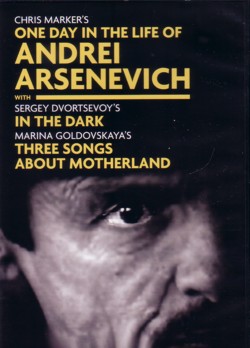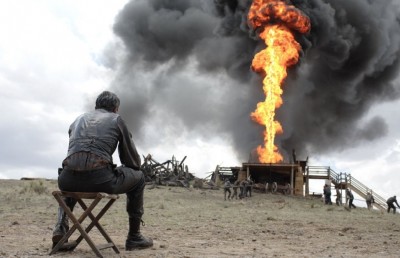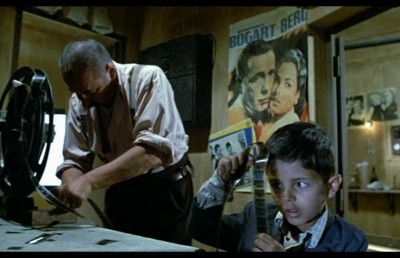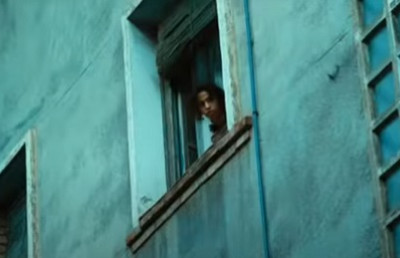Tarkovsky and the World of Documentary
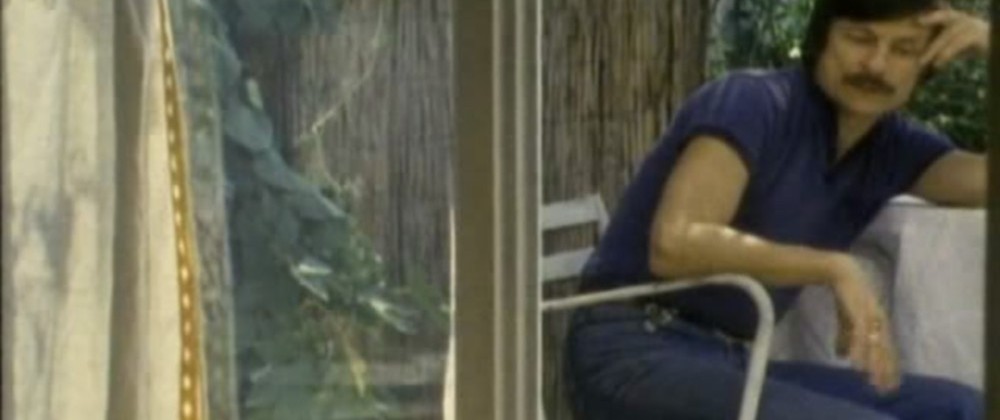
Has there ever been a director, with as little as seven feature films to his credit, to have inspired as many tributes and documentaries as Andrei Tarkovsky? In fact, the number of documentaries about or featuring Tarkovsky is much greater than his output of seven films. According to the invaluable Tarkovsky website Nostalghia there are about 17 such documentaries, which does not include two recent additions, Rerberg and Tarkovsky: The Reverse Side of Stalker (Igor Maiboroda, 2009) and Meeting Andrei Tarkovsky (Dmitry Trakovsky 2008). Across this overview I will be considering five Tarkovsky documentaries, the two cited above, plus Chris Marker’s One Day in the Life of Andrei Arsenevich, Tempo di viaggio (Voyage in Time, Andrei Tarkovsky, Tonino Guerra, 1988), and Moscow Elegy (Alexandr Sokurov, 1988).
Tarkovsky himself has contributed to the wealth of material surrounding his work with the quirky but fascinating Voyage in Time (1983), which he co-directed with Italian writer Tonino Guerra for Italian television RAI. Voyage in Time is a keepsake of time passed by two fellow filmmakers and poets, Tarkovsky and Guerra, as Guerra accompanies Tarkovsky for his location scouting in Italy for Nostalghia. Guerra, who wrote Nostalghia, also wrote many films for Michelangelo Antonioni, one of Tarkovsky’s favorite filmmakers. In the opening scene Tarkovsky arrives at Guerra’s flat and has Guerra read him a poem he has just written for him. After the reading the phone rings, Guerra answers and it is “Michelangelo” (Antonioni of course) and Tarkovsky asks Guerra to “Say hi to Michelangelo, and tell him thanks for everything.” This documentary sets a common pattern for the better future Tarkovsky documentaries: they either feature or are made by a fellow filmmaker, in the case of Voyage in Time a co-worker, but also colleague, friend, and/or admirer. I’m thinking here of Moscow Elegy, directed by Tarkovsky acolyte, of sorts, Alexandr Sokurov (1988), Rerberg and Tarkovsky: The Reverse Side of Stalker (Igor Maiboroda, 2009), and Chris Marker’s One Day in the Life of Andrei Arsenevich.
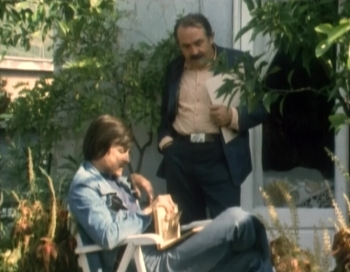
Tarkovsky with Tonino Guerra
Rerberg and Tarkovsky is an attempt to reevaluate not only the working relationship between Tarkovsky and the cinematographer Giorgi Rerberg but Rerberg’s own career, which for years became an asterisk associated with Stalker: the cinematographer of the first shot and subsequently damaged version of Stalker. Rerberg was replaced first by Leonid Kalashnikov and then Aleksandr Knyazhinsky for the (still troubled) filming of the second and third ‘takes’ of Stalker.
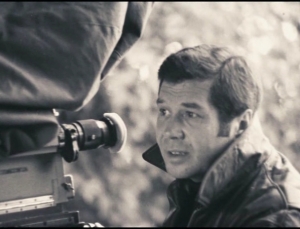
Aleksandr Knyazhinsky
The other connection Rerberg has with Tarkovsky is of course having photographed arguably his masterpiece, Mirror (1975). Being fired by Tarkovsky from Stalker (and blamed for the ruined footage) did irreparable harm to Rerberg’s career, which was never the same after, reduced to surviving on making commercials. Director Maiboroda’s documentary is a form of historical recuperation of Rerberg, who lived from 1937 to 1999, or at least an attempt to distance him from the Stalker account and demonstrate that Rerberg was before and after a nuanced and important artist, and, as a great part of the documentary attests to through a host of interviews with people who knew him well, a man of remarkable cultural and intellectual wealth. As a child Rerberg was immersed in a world of art, painting, classical music, literature, poetry, and philosophy. Indeed, the footage we see of Rerberg’s films before his work with Tarkovsky reveals a remarkable sensitivity to the human face, light and texture (all of which also characterized Tarkovsky’s works).This is evident in some stills from Rerberg’s first film, Pervyy Uchitel (The First Teacher, 1966, Andrey Konchalovskiy) starring the actor who played the Tartar in Andrei Rublev, Bolot Beyshenaliyev.
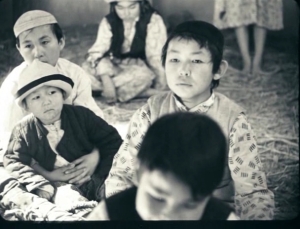
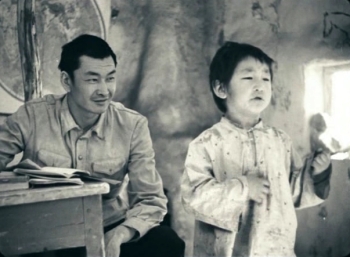
First Teacher
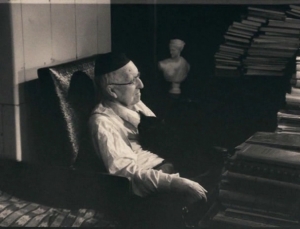
Aleksei Losev
Rerberg was so revered as a cinematographer that when the rare opportunity came to film, for the first and only time, Russia’s great 20th century philosophical and religious thinker Aleksei Losev, Rerberg was called for the task. But there is also a “reverse side” of Rerberg, one that Tarkovsky also knew, a heavy drinker, libertine, a man who was hard to befriend, who could be blunt and intimidating.
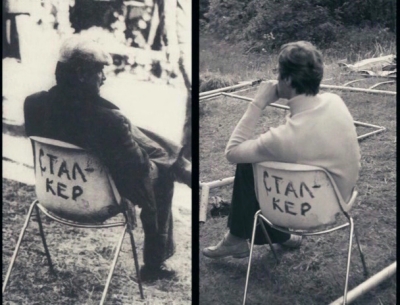
One genius too many on the set of Stalker?
Of the two newer documentaries mentioned above, Meeting Andrei Tarkovsky falls outside the noted pattern, as it is made by a fan who takes his love for Tarkovsky and uses it to search for an answer (of sorts) to why Tarkovsky’s films move him so much (a difficult goal because emotions and passion are so hard to articulate). Trakovsky takes one phrase from Tarkovsky which has always fascinated him, “Death does not exist,” and uses it as his spiritual guide. As a film Meeting Andrei Tarkovsky does not measure up to the others discussed here, simply because Trakovsky, a student of film, a fan turned part-time filmmaker, is not Marker or Sokurov. (Which I’m sure he would be the first to admit, but frankly can be said of many other filmmakers.)
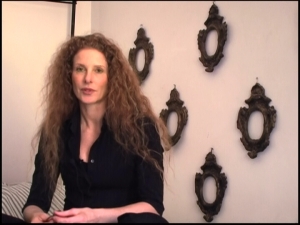
Domiziana Giordano
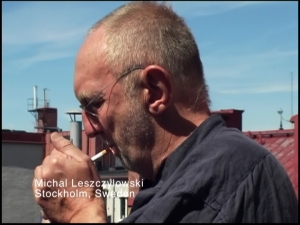
Michal Leszczylowski
Meeting Andrei Tarkovsky is only ever be as good as its interview subjects; and some are spellbinding, like Domiziana Giordano, who shifts fluidly from lovely Italian to fluent English, and reveals how she was a daughter figure to Tarkovsky; his son Andrei Andreevich Tarkovsky, who reveals the fascinating coincidence (?) that the date of the calendar seen under water in the stream tracking shot in Stalker, December 28, was the day his father died; some of the interviews offer the gift of an insider’s insight, like the grand Swedish actor Erland Josephson, who worked with Tarkovsky twice, Nostalghia and The Sacrifice, and tells us how his memory of these two films remain more vivid than any other film he worked on; and Michal Leszczylowski, professional editor and director of another fascinating documentary on Tarkovsky, Directed By Andrei Tarkovsky, a production account of the Swedish lensed The Sacrifice. Leszczylowski reveals that people often ask him, as an editor with 30 years of experience, “who makes editing decisions?” He admits it took him several years to find the answer, and it is illuminating in a way that only an editor could reveal: “In my opinion, in bad movies, the decisions are made by editor or director. In all good movies, the decisions are made by the material.” Leszczylowski’s thoughts on his working relationship with Tarkovsky makes for some of the film’s best material. I think Leszczylowski gets to the heart of what made Tarkovsky such a great filmmaker when he says that Tarkovsky was a “servant to the material” and that he knew how to absorb the skill and talent of those working around him. He may have thought himself a genius, but he wasn’t foolish enough to think that only a genius can come up with a genius idea! While other interviews in Meeting Andrei Tarkovsky are either superfluous, like the one with a monk named Michael McCormack, who talks about how Tarkovsky inspired him to find his calling in life; fair enough, but do we also have to hear his critical opinion on the formal merits of Tarkovsky’s films? Other interviews are too obvious, such as the Italian film academic Fabrizio Borin, and filmmakers Manuele Cecconello and Krzysztof Zanussi. The film ends on a nice note, returning to the town where Tarkovsky spent most of his childhood, Yurevets, although there is no real sense of a resolution or purpose to the film’s geographical trajectory. The film as a whole lacks the vision and maturity necessary to encounter a filmmaker as profound as Tarkovsky. Still, one must admire the manner in which Trakovsky took a grass-roots approach to funding the film (he solicited the final $10,000 or so necessary to completing the film as a form of advance payment for the eventual DVD from other Tarkovsky fans). It stands as a grand proverbial “labor of love” and for that merits respect.
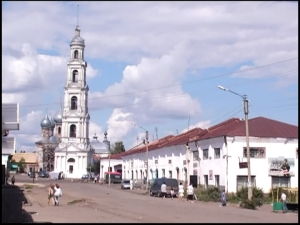
Tarkovsky’s Home Town today
Documentaries still have the aura of objectivity, always meant as a relative term (since pure objectivity can never exist), and much of the ‘relativeness’ comes from the inclination of the filmmaker. Which is why in Meeting Andrei Tarkovsky director Trakovsky filters Tarkovsky largely through the eyes of religion, largely, though not exclusively, the orthodox Christian kind. Only this can explain the odd (though not without a curious interest) interview with an orthodox Christian monk, Michael McCormack. But Tarkovsky himself would probably ask, why should a monk have any more insight into my work than a lathe operator or a car mechanic?
Aleksandr Sokurov’s documentary, Moscow Elegy takes a more conventional biographical approach to the subject, partly in design of it being originally commissioned to mark Tarkovsky’s 50th birthday. However, in the hands of Sokurov even a conventional biographical format becomes a product with its own particular style and mood, in this case elegiac and contemplative. In direct contrast to Meeting Andrei Tarkovsky and Rerberg and Tarkovsky: The Reverse Side of Stalker, Moscow Elegy allows Tarkovsky’s world to ‘breathe’ with more use of silence and music (much of it sampled from Tarkovsky soundtracks) replacing a reliance on text (spoken and in voice-over). Sokurov also makes more use of Tarkovsky footage, fiction and non-fiction, including Voyage in Time,Nostalghia, and The Sacrifice (although for aesthetic reasons, most of the extracts are in black and white rather than the original color). Borrowing from Mirror??’s aesthetic, Sokurov makes it difficult to sort out fiction from non-fiction, and Tarkovsky’s own films from those of others; Sokurov erases the line between Tarkovsky’s real and fictional worlds, giving more space to Tarkovsky’s own voice, through secondary filmed interviews and behind the set footage (of ??The Sacrifice for example). There is even a rare clip from Marlen Khiutsiev’s IIlyich (I am Twenty, 1966), which features a young Tarkovsky as a party guest.
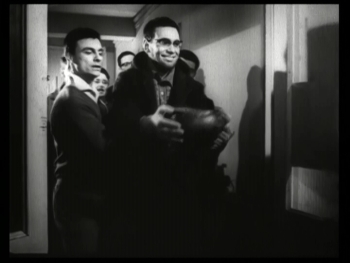
Young Tarkovsky Acting
There is very little of Sokurov’s voice (in the literal sense) in his documentary. All of these stylistic choices make it difficult to separate Tarkovsky’s films from his cultural context, which serves the aesthetic function of a mosaic (Tarkovsky as an inseparable product of his friends, family, culture and country).
Chris Marker’s film, made as part of the ongoing “Cinéma, de Notre Temps” series by Janine Bazin and Andre S.Labarthe, which started in 1964 (under its original title Cinéastes de notre temps), begins with the opening shot of Mirror as a set-up for the heartfelt meeting between Andrei Tarkovsky’s son and his mother Larissa at a Paris airport. It has been the five years of Andrei’s exile that has separated Larissa and Andrei from their son, which results in a touching moment, but within this emotional moment Marker also drops an aesthetic insight: linking the opening image of Mirror with the camera tracking toward the back of a woman seating on a fence, to a similar image of Larissa waiting at the window for her son’s arrival.
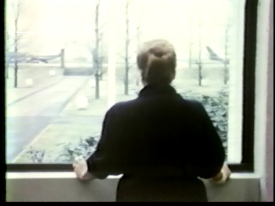
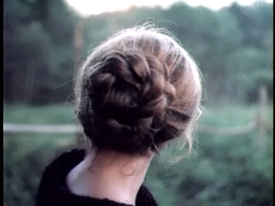
Marker does this continuously, like cutting from Tarkovsky’s paranoid belief that two darkly dressed Soviet men who visited him with news of his government’s approval of a travel visa for his son being two KGB men sent to kill him, to a two-shot of two thugs from his noir student short film, Hemingway’s The Killers. Marker’s approach, and it is one I personally feel most inclined toward, is to underscore Tarkovsky’s affinity with nature, and his sublime recreation of it on film. As Marker’s female voice-over (Alexandra Stewart) notes, “And like the Japanese, a physical relationship to nature. There’s nothing more earthy, more carnal than the work of this reputed mystical filmmaker. Maybe because Russian mysticism is not that of Catholics, terrified by Nature and the body. Among the Orthodox nature is respected and the Creator is revered through his creation. And in counterpoint to the characters each film knits a plot between the four elements, sometimes treating them separately, sometimes together.” Unlike the directors of the other documentaries, Marker is not afraid to analyze Tarkovsky’s films and he indeed spends a considerable amount of screen time articulating the meaning of nature across his films, employing shot description and formal analysis. Some viewers may balk at this exposition, but the insights are worthy, and remain firmly embedded to the text (Tarkovsky’s films). Like, for example, Marker’s intriguing interpretation of Tarkovsky’s penchant for high angle camera positions that look down at figures and keep them ‘grounded’ to the earth. This, he argues, stands in contrast to classic American films which often frame the hero against the sky, whereas the sky is rarely seen in Tarkovsky’s films, who prefers to set human against the earth, ground, trees, grass, water, etc. (even if this claim is slightly over-stated). Marker’s interpretations never stray far from the works, or rely on abstract concepts that are far removed from the film’s style or form. On the few occasions that he does interject what some might call a fanciful reading, his analysis still stems from a close viewing of the films; like his reading of one of Tarkovsky’s favorite camera positions, the over-head angle shot that is perpendicular to the ground, as an expression of the Russian Orthodox Christian belief in Christ Pantocrator (all knowing, all-seeing), Christ’s judgmental gaze from the heights of the Church domes. By contrast, Trakovsky in Meeting Andrei Tarkovsky comes to his work with a predetermined view of Tarkovsky as a spiritual/religious filmmaker and his insights are filtered through this prism, which tells us more about himself than Tarkovsky’s films.
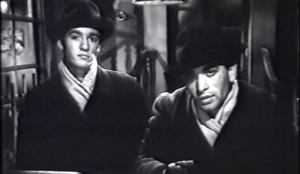
Tarkovsky’s student short film, The Killers
Marker concludes One Day in the Life of Andrei Arsenevich by returning back to an early location, Tarkovsky’s hospital room. For some viewers the image of a frail, bandaged Tarkovsky may be too painful to watch (we also get a brief extract of this same scene with the ill Tarkovsky talking to Sven Nykvist in Sokurov’s Moscow Elegy). In this instance the discussion is about his final film, The Sacrifice. Earlier in the film we saw Marker’s behind the scenes eavesdropping of an energetic Tarkovsky rehearsing the famous penultimate long take of The Sacrifice, where we hear the bustling cast and crew communicate in many languages, including Swedish, Italian, Russian and English. Now with time no longer on Tarkovsky’s side, communication is made directly to Nykvist (over the color timing). Editor Michal Leszczylowski comes in to the room to show Tarkovsky and Nykvist the final cut of The Sacrifice on a TV monitor for, we assume, the first time. Marker cuts directly from a close-up of Tarkovsky in deep thought after the screening, to news of Tarkovsky’s death and still photos of the funeral. Rather than end on this sad note, Marker returns to another beginning, the two paralleling shots that bookend Tarkovsky’s career: the opening shot of Ivan’s Childhood, that begins on a child standing at the foot of a tree and then cranes up the tree, and the closing shot of The Sacrifice, which starts on a boy lying against a newly planted tree, and then cranes up the tree. Is this mirroring of child/tree/crane a contrived aesthetic closure to a career, or a sign of some grand design? Marker argues against the former by noting that Tarkovsky did not know he was ill when he filmed the scene. Marker prefers not to dig further into this coincidence –for example, Tarkovsky may not have known about his illness during the shooting, but he clearly did during the post-production, leaving open the possibility that he could have re-edited the film to place that shot at the end– but points to it as yet another enigma in the life and career of Tarkovsky, like the séance he mentions earlier in the film where a young Tarkovsky apparently communed with the spirit of Boris Basternak, who foretold that he would make seven films in his career (to which Tarkovsky replied, “only seven,” and Basternak, “yes, but seven good ones!”). And to add to Marker’s ledger, remember the coincidental appearance of the date of Tarkovsky’s death on the underwater calendar in Stalker. An enigma or coincidence?
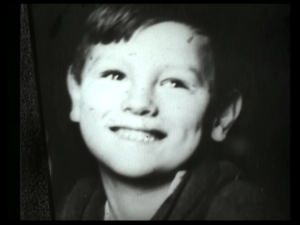
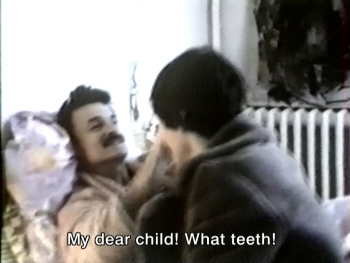
Young Tarkovsky (above) and the long-awaited reunion with his son
Each of the documentaries discussed here were conditioned by the time of their making. Coming twenty-two years after the death of Tarkovsky, Trakovsky’s Meeting Andrei Tarkovsky is structured as a forward glance back at the current significance of Tarkovsky, and what his films mean for people today (this is Trakovsky’s central question when he returns to Russia: what does Tarkovsky represent for the average Russian person today?). Sokurov’s film, commissioned when Tarkovsky was alive and at age 50, though completed after his death, is a summation of his career within the Iron Curtain. When his death makes an appearance we have already experienced the death of Tarkovsky’s mother in 1979, which is recognized with a tracking shot outside her final resting place.
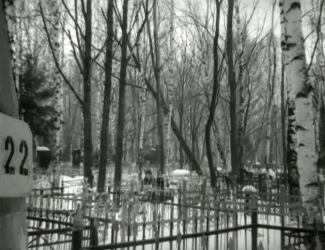
The grave-site of Tarkovsky’s Mother
Sokurov cuts between news of Tarkovsky’s death on France TV and a funeral requiem for Tarkovsky outside the steps of an Orthodox Russian church in Paris (stills of which we see at the end of Marker’s film too). Like Trakovsky in his film, and Marker in his, Sokurov follows death by a return to the beginning, panning across a wintry setting to frame the house where the Tarkovsky family spent their summers and springs.
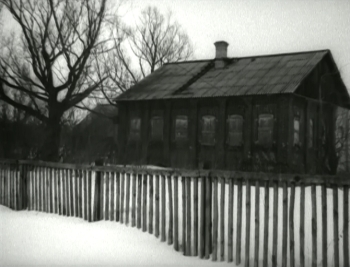
While Trakovsky sets out looking for death, Sokurov arrives at it naturally, giving it far more emotional weight. As if to give the final word to Tarkovsky, Sokurov ends his film, after a touching montage of Tarkovsky’s burial site, an image of Tarkovsky as a young boy, and the image of his mother as she appeared in Mirror, with a brief shot, in full color (echoing the shift to color at the end of Andrei Rublev), from the final scene of the Mirror. Chris Marker’s One Day in the Life of Andrei Arsenevich, which was made in 1999, is less interested in Tarkovsky’s legacy or historical context. Marker looks back with the eye of an appreciative peer, hungry to explicate and learn from Tarkovsky’s art.
Notes on the Home Versions of the Films Discussed
Rerberg and Tarkovsky: The Reverse Side of Stalker is not yet available on DVD.
The self-financed Meeting Andrei Tarkovsky is available to order at the director’s website.
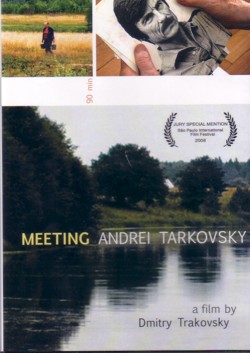
Both Tempo di viaggio and Moscow Legacy are available from Facets Video.
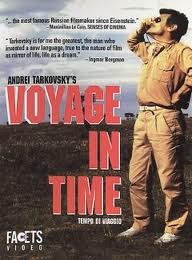
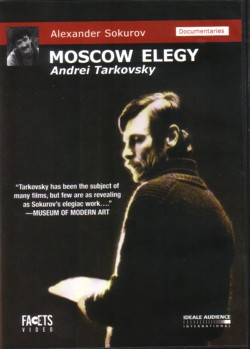
One Day in the Life of Andrei Arsenevich has been made available recently by Icarus Films. Included along with the Marker film on this DVD are two short films, In the Dark (Sergey Dvortsevoy, 2004) and Three Songs about Motherland (Marina Goldovskaya, 2008), apparently programmed by Chris Marker to complement his film. Although neither can be said to have any aesthetic affinity to Tarkovsky, they are both Russian, with contrasting subjects: whereas In the Dark concentrates on a lonely old man who lives with his playful white cat and survives (barely) making paper bags, Three Songs about Motherland is broader in scope, looking at three different Russian communities and how they have coped in the Post-Communist era.
